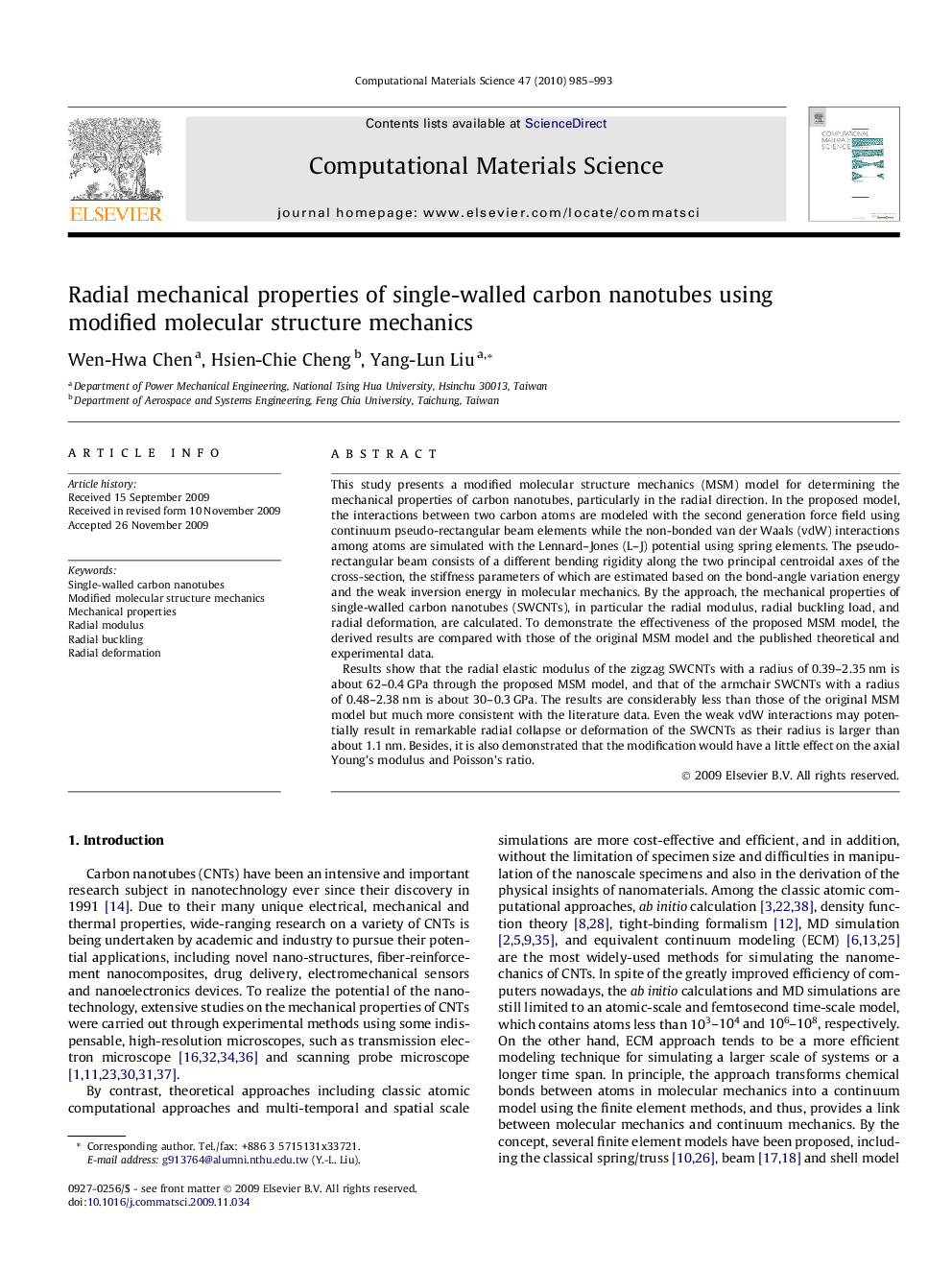| Article ID | Journal | Published Year | Pages | File Type |
|---|---|---|---|---|
| 1562751 | Computational Materials Science | 2010 | 9 Pages |
This study presents a modified molecular structure mechanics (MSM) model for determining the mechanical properties of carbon nanotubes, particularly in the radial direction. In the proposed model, the interactions between two carbon atoms are modeled with the second generation force field using continuum pseudo-rectangular beam elements while the non-bonded van der Waals (vdW) interactions among atoms are simulated with the Lennard–Jones (L–J) potential using spring elements. The pseudo-rectangular beam consists of a different bending rigidity along the two principal centroidal axes of the cross-section, the stiffness parameters of which are estimated based on the bond-angle variation energy and the weak inversion energy in molecular mechanics. By the approach, the mechanical properties of single-walled carbon nanotubes (SWCNTs), in particular the radial modulus, radial buckling load, and radial deformation, are calculated. To demonstrate the effectiveness of the proposed MSM model, the derived results are compared with those of the original MSM model and the published theoretical and experimental data.Results show that the radial elastic modulus of the zigzag SWCNTs with a radius of 0.39–2.35 nm is about 62–0.4 GPa through the proposed MSM model, and that of the armchair SWCNTs with a radius of 0.48–2.38 nm is about 30–0.3 GPa. The results are considerably less than those of the original MSM model but much more consistent with the literature data. Even the weak vdW interactions may potentially result in remarkable radial collapse or deformation of the SWCNTs as their radius is larger than about 1.1 nm. Besides, it is also demonstrated that the modification would have a little effect on the axial Young’s modulus and Poisson’s ratio.
